Harikrishnan S. 2020 -
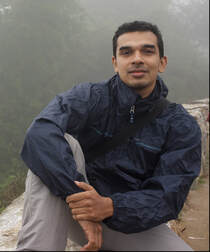
I have been interested in reptiles and amphibians for as long as I can remember. Since 2006, I have carried out herpetological and ecological studies in the Western Himalayas, the Western Ghats, eastern India, and the Andaman & Nicobar Islands. As part of this, for my PhD thesis, I focused on the lizard communities in these islands, exploring patterns of species co-occurrence, species-abundance distributions, and body size distributions in local and regional communities. I started that study focusing on the idea of the ecological niche, and ended with a deeper appreciation for the role of historical and biogeographic processes on shaping communities.
My current work with the Long-term Ecological Observatories (LTEO) programme aims to establish a monitoring programme for herpetofauna across India, which will help us detect changes in amphibian and reptile communities in response to global climate change. My other interests are photography and travelling to wild places, but usually only to places where I can go ‘herping’. If I am not doing any of this, it means I am probably working on my Jiu-Jitsu skills, which has become my other passion in life.
My current work with the Long-term Ecological Observatories (LTEO) programme aims to establish a monitoring programme for herpetofauna across India, which will help us detect changes in amphibian and reptile communities in response to global climate change. My other interests are photography and travelling to wild places, but usually only to places where I can go ‘herping’. If I am not doing any of this, it means I am probably working on my Jiu-Jitsu skills, which has become my other passion in life.
Vivek Cyriac 2021 -

I have always been fascinated by the sheer diversity of life. Although I have had many hobbies and shifting interests growing up, my fascination for amphibians and reptiles has always stayed. Doing a Masters in Wildlife biology further cemented my interest in exploring diverse questions about the behaviour, ecology and evolution of reptiles and amphibians.
During my Masters, I travelled extensively in Kerala's Western Ghats and got interested in fossorial reptiles. This led me to do a PhD exploring the evolution of fossoriality in snakes at IISER Thiruvananthapuram. My work at IISER revolved around understanding the factors that determine diversification in fossorial reptiles and how they adapt to environmental change focusing on the snake family Uropeltidae (shieldtail snakes). I also studied how defensive behaviours and colourations in these snakes influence diversification. My current work at CES tries to expand on my earlier work. It aims to understand the drivers of cryptic speciation in these snakes. Apart from my research, I enjoy travelling and exploring local cuisines, which I usually combine with some herping on the side.
During my Masters, I travelled extensively in Kerala's Western Ghats and got interested in fossorial reptiles. This led me to do a PhD exploring the evolution of fossoriality in snakes at IISER Thiruvananthapuram. My work at IISER revolved around understanding the factors that determine diversification in fossorial reptiles and how they adapt to environmental change focusing on the snake family Uropeltidae (shieldtail snakes). I also studied how defensive behaviours and colourations in these snakes influence diversification. My current work at CES tries to expand on my earlier work. It aims to understand the drivers of cryptic speciation in these snakes. Apart from my research, I enjoy travelling and exploring local cuisines, which I usually combine with some herping on the side.
Caleb Daniel 2019 - 21
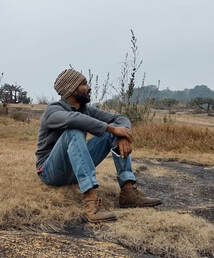
My fascination for the natural world and the animals in it are the earliest memories I have from my childhood. Over the years, I tried a lot of disciplines which fostered an element of being outdoors and working in wild systems. In that journey, I found a deep fascination towards reptiles and amphibians. I eventually started volunteering and working in various herpetofaunal studies and completed my masters in Ecology and Environmental science to further my commitment to academia.
In the past I have worked towards understanding life history, thermal, nutritional and behavioural trade-offs towards anthropogenic disturbances, invasive species spread and climate change effects, mostly on lizards. I have also worked on documenting biodiversity and community composition change across temporal timescales. Currently, I am part of the herpetofaunal theme in the Long-Term Ecological Observatories programme which will help us detect changes in amphibian and reptile communities in response to climate change. Apart from research, I am also an amateur musician and rock climber.
In the past I have worked towards understanding life history, thermal, nutritional and behavioural trade-offs towards anthropogenic disturbances, invasive species spread and climate change effects, mostly on lizards. I have also worked on documenting biodiversity and community composition change across temporal timescales. Currently, I am part of the herpetofaunal theme in the Long-Term Ecological Observatories programme which will help us detect changes in amphibian and reptile communities in response to climate change. Apart from research, I am also an amateur musician and rock climber.
Princia Dsouza 2018 - 2021
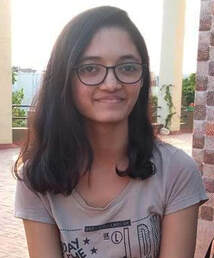
I have been fascinated by reptiles from a very young age. I am currently doing my Masters in Zoology and my research interests lie in the fields of molecular biology and evolution. I have been interning in lab since 2018 and my work has mainly been in providing molecular genetic data for various projects in lab, particularly on herpetofauna. At present, I am involved with a project on revising the taxonomy of Cnemaspis geckos from the Western Ghats.
Apart from work, I love reading, sketching and journaling. I also spend a lot of my time reading comics, particularly DC, my favourites being Joker and Batman.
Apart from work, I love reading, sketching and journaling. I also spend a lot of my time reading comics, particularly DC, my favourites being Joker and Batman.
Achyuthan Srikanthan 2016 - 2021
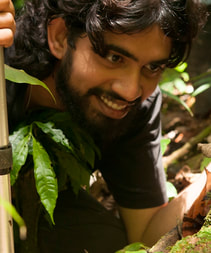
I am interested in looking into the various aspects that contribute to evolution and speciation. I like reptiles as they are enigmatic, vibrant, elegant and serve as an excellent evolutionary model to study. I currently work on understanding the diversity of micro-ornamentations in snake scales. The scales of snakes have been observed to possess unique microstructures that are variable at the interspecific level. My project involves a multidisciplinary analysis of snake scales which might lead to insights about the role of genetic and environmental factors which direct scale microornamentation patterns. I am also interested in topics such as systematics, bio-diversity and trophic ecology of pit-vipers and Indian gekkotans.
Other than spending time wishing that dinosaurs were alive, I paint/ illustrate/ sculpt wildlife (again, very paleo/herp-biased). Rarely I try to make something like music using tools such as a mridangam or a guitar.
Other than spending time wishing that dinosaurs were alive, I paint/ illustrate/ sculpt wildlife (again, very paleo/herp-biased). Rarely I try to make something like music using tools such as a mridangam or a guitar.
P. Gowri Shankar 2014 - 2022
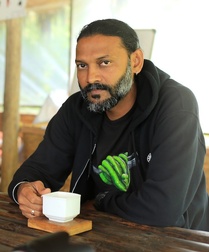
Snakes, especially king cobras have been a passion for as long as I can recall. As a field biologist, I have been studying their natural history both in captivity and in wild for close to two decades. I am currently enrolled as a PhD candidate at the North Orissa University and an affiliate student at Centre for Ecological Sciences, IISc, India. I was part of a student exchange programme at Uppsala University, Sweden (ERASMUS-MUNDUS EMINITE Program-2014-2016)
I am currently examining range-wide phylogeography and contemporary population genetic structure of the king cobra within India and reconstructing the biogeographic history of O. hannah in Southeast Asia. We will test for the presence of evolutionary distinct units (ESU’s) and underlying drivers, for the long-term conservation of king cobras. We plan to use a sampling design that incorporates the geographical and bioclimatic heterogeneity of the Indian subcontinent to collect king cobra samples (non-invasive) and occurrence data across the extant range of the species.
I am currently examining range-wide phylogeography and contemporary population genetic structure of the king cobra within India and reconstructing the biogeographic history of O. hannah in Southeast Asia. We will test for the presence of evolutionary distinct units (ESU’s) and underlying drivers, for the long-term conservation of king cobras. We plan to use a sampling design that incorporates the geographical and bioclimatic heterogeneity of the Indian subcontinent to collect king cobra samples (non-invasive) and occurrence data across the extant range of the species.
Ashwini Mohan 2015 - 2017
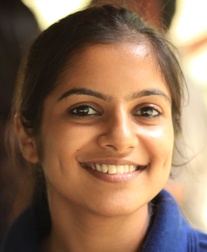
I completed my Masters’ dissertation studying phylogeographic patterns in island populations of the Andaman keelback snake (Xenochrophis tytleri). I then went back to the A&N Islands to study geckos, focussing on their distribution, genetic diversity and population structure. My interests are population genetics of terrestrial island fauna, biogeography and evolutionary mechanisms that create and maintain diversity. I am currently a PhD student at the Vences lab, TU Braunschweig, Germany. My PhD focuses on macroevolutionary patterns, ecological niche and diversification within island lineages of the genus Phelsuma.
Besides academia, I like sketching (making scientific illustrations is my side business) and I am also a crappy writer.
Besides academia, I like sketching (making scientific illustrations is my side business) and I am also a crappy writer.
Priyanka Swamy 2014 - 2019

I have been using molecular tools such as DNA sequence data to investigate processes that generate and maintain biological diversity. I am curious to answer fundamental questions related to population divergence, adaptation and patterns of phylogenetic genetic relationships, biogeography and conservation. Apart from being a lab rat, I am always excited to work in the field and enjoy exploring new places.
I am currently actively involved in the study to examine phylogeography and contemporary population genetic structure of the king cobra within India and reconstruct the biogeographic history of O. hannah in Southeast Asia. Within the molecular phylogeography framework, we are using mtDNA and nuclear markers to test for the presence of evolutionary distinct units (ESU’s) and underlying drivers of diversification, for the long-term conservation of king cobras. I also work on other taxa (frogs, lizards and snakes) to understand their systematics and phylogeny.
I am currently actively involved in the study to examine phylogeography and contemporary population genetic structure of the king cobra within India and reconstruct the biogeographic history of O. hannah in Southeast Asia. Within the molecular phylogeography framework, we are using mtDNA and nuclear markers to test for the presence of evolutionary distinct units (ESU’s) and underlying drivers of diversification, for the long-term conservation of king cobras. I also work on other taxa (frogs, lizards and snakes) to understand their systematics and phylogeny.
Vijay Ramesh 2013 - 2014
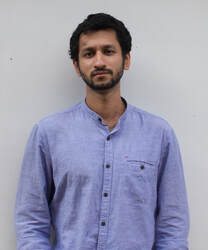
Vijay Ramesh completed his undergraduate thesis work in the KS Lab. As a part of his thesis, he worked on detecting cryptic diversity within the Indirana and Walkerana genus of frogs of the Western Ghats, using molecular and morphological data. Recently, a number of co-authors in the KS Lab and he were involved in describing an ancient frog species of the Walkerana genus. You can read more about it here. At present, he is working on his PhD at the Department of Ecology, Evolution and Environmental Biology at Columbia University. For more details, visit his website.
S.R. Chandramouli 2012 - 2014
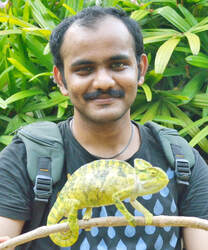
I worked on the systematics of the Anuran families Micrixalidae, Ranixalidae, Dicroglossidae, Bufonidae and Microhylidae and the scincid genus Ristella of peninsular India as a part of the larger project targeted at mapping the distribution and diversity of herpetofauna in the Western Ghats. Apart from these, I studied comparative osteology of Anuran genera of the Western Ghats in order to explore their osteological diversity and adaptations in relation to their microhabitats (in collaboration with Prof. Sushil K. Dutta). My current work focuses on herpetofauna of the Andaman and Nicobar Islands of the Bay of Bengal.
Aditi Jayarajan 2011 - 2016
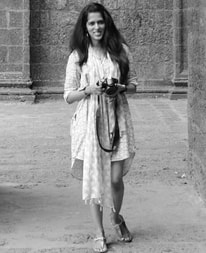
I am interested in questions related to evolutionary ecology and biogeography. My research interests are mainly focused on phylogeography, phylogenetics and bioacoustics. I have worked on different model systems to delimit species and understand how they have diversified in time and space. I would also like to use acoustics as another layer to delimit species.
From 2011-2016, I was part of a team that worked on amphibians and reptiles across the Western Ghats in India. I worked with many researchers who used frogs, lizards and snakes as model systems in order to answer questions related to distribution and diversity. I also developed and standardised lab protocols and trained research personnel and summer interns. I am currently a Ph.D. student at the University of Florida in the Florida Museum of Natural History. I am interested in fossils of bats and their morphometrics. I use the museum collections in order to get a snapshot into the past. I like to communicate my science with the public through outreach and K-12 lesson plans.
From 2011-2016, I was part of a team that worked on amphibians and reptiles across the Western Ghats in India. I worked with many researchers who used frogs, lizards and snakes as model systems in order to answer questions related to distribution and diversity. I also developed and standardised lab protocols and trained research personnel and summer interns. I am currently a Ph.D. student at the University of Florida in the Florida Museum of Natural History. I am interested in fossils of bats and their morphometrics. I use the museum collections in order to get a snapshot into the past. I like to communicate my science with the public through outreach and K-12 lesson plans.
Kalpana Das 2011 - 2013
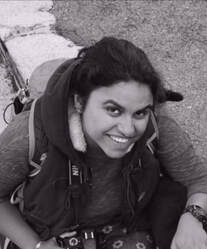
I completed my Masters’ dissertation from this lab on geometric morphometry of frogs in the Western Ghats, India". Later I worked on a project on snout shape variation in sister clades of bush frogs of the Western Ghats using geometric morphometrics.
I am currently a Ph.D. student at Natural History Museum, Berlin and a visiting student in this lab to collect morphometric data on Western Ghats frogs. My thesis involves looking at ecomorphological patterns in tropical frogs. I am also collaborating with the project to use 3D geometric morphometric methods on bush frogs CT scan data. I am interested in the questions of how morphologies are shaped through evolutionary processes. I use morphometrics data including high dimensional 3D morphometrics to look for ecomorphological patterns. I have mostly worked with lizards, birds and frogs. Besides that, I am also interested in wildlife photography, science communication and outreach.
I am currently a Ph.D. student at Natural History Museum, Berlin and a visiting student in this lab to collect morphometric data on Western Ghats frogs. My thesis involves looking at ecomorphological patterns in tropical frogs. I am also collaborating with the project to use 3D geometric morphometric methods on bush frogs CT scan data. I am interested in the questions of how morphologies are shaped through evolutionary processes. I use morphometrics data including high dimensional 3D morphometrics to look for ecomorphological patterns. I have mostly worked with lizards, birds and frogs. Besides that, I am also interested in wildlife photography, science communication and outreach.
Mrugank Prabhu 2010 - 2012
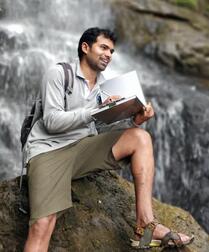
I was associated with the lab from 2010 to 2012 as project assistant. I worked extensively in the field to gather data on distribution of amphibians and reptiles throughout Western Ghats (this was the best time of my life). I am interested in population ecology and mark-recapture studies.
Currently I am working with BNHS on bird migration and also on population ecology of the stream dwelling amphibian Nyctibatrachus humayuni in Mumbai.
Currently I am working with BNHS on bird migration and also on population ecology of the stream dwelling amphibian Nyctibatrachus humayuni in Mumbai.
Saunak Pal 2010 - 2014
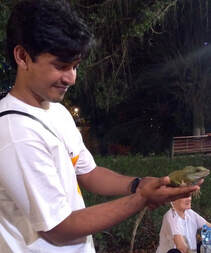
The sheer diversity and cryptic nature of reptiles and amphibians have fascinated me from my early college days. I have been involved in various studies across the Western Ghats, trying to understand the factors that influence the diversification of amphibians and reptiles, patterns of distribution, and causes of endemism. I am primarily interested in exploring the systematics and biogeography of endemic reptiles, especially agamid and gekkonid lizards of the Western Ghats using morphological, geographic, and molecular evidence.
Currently, I am working as a research scientist in the natural history collection department at the Bombay Natural History Society where I am involved in curating herpetofauna specimens as well as digitization of the collection. I am trying to use historical data in the form of museum specimens and associated information to address data gaps for lesser-known reptiles and amphibians. While not in the field looking for lizards or in the museum measuring or photographing them, I dabble in art, music, poetry, and cooking.
Currently, I am working as a research scientist in the natural history collection department at the Bombay Natural History Society where I am involved in curating herpetofauna specimens as well as digitization of the collection. I am trying to use historical data in the form of museum specimens and associated information to address data gaps for lesser-known reptiles and amphibians. While not in the field looking for lizards or in the museum measuring or photographing them, I dabble in art, music, poetry, and cooking.
- Asha A., Project Assistant (GIS), 2011–2013.
- Samriddhi Chaturvedi (molecular genetics), Project Assistant, 2011–2013.
- Anasuya Chakrabarty (molecular genetics), Project Assistant, 2011–2012.
- Emil Mary (molecular genetics), Project Assistant, 2010–2011.
- Reshmi Raveendran (molecular genetics), Project Assistant, 2010–2011.
- Aniruddha Dutta Roy (herpetology), Project Trainee, 2006-2007.
- M.S. Chaitra (herpetology), Project Assistant, 2006–2008.

